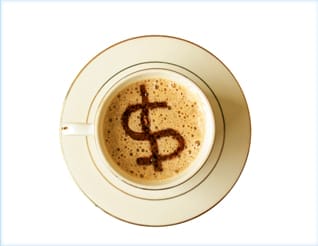According to the new policy, which was instituted along with many other new rules at the ubiquitous coffee chain, baristas were required to steam milk for each drink and each customer, rather than steaming an entire pitcher to be used for several beverages. For many coffee connoisseurs, this was a welcome change, and for obvious reasons: Starbucks believed the move would ensure “quality of the beverage in taste, temperature and appearance” while also reducing the “possibility for errors.”
As a coffee aficionado myself, I entirely agreed.
However, many baristas (correctly) worried that the change would eventually lead to longer lines, causing some customers to drop out and take their business elsewhere.
Making a good cup of cappuccino, like many things in life, takes time. But no one would wait forever for a cup of coffee. (The writer-comedian Larry David had a hilarious take on this issue, in one of his “Curb Your Enthusiasm” episodes, in which he talks about “sample abuse” at an ice-cream parlor.) This dichotomy between consumers’ valuing a service that takes more time and their dislike towards waiting for the same service is not peculiar to coffee alone.
Think, for instance, about waiting for an appointment with a tax consultant or a primary care doctor. Of course, no customer likes long wait times. However, during these appointments, the same customers would prefer that the tax consultant or doctor spend more time with him or her, because the service value improves in time. On one hand, addressing this preference implies a longer waiting time for all future customers. On the other hand, to cut wait times, the service provider may have to speed up and reduce quality, which helps no one.
So, is Starbucks right in slowing down? Will this slow-down cause more waiting lines for customers? Yes and yes.
Theory suggests that it is in the interest of a high-quality firm to slow its service down, even at the risk of increased waiting time. I addressed this tradeoff in a paper called the “Quality-Speed Conundrum,” which appeared in the journal Management Science.
Unfortunately, even a small change in service time creates a non-linear and significant impact on waiting times. Eventually, Starbucks will have to cut wait times for customers and generate revenues, which will leave limited options for boosting revenues: increase the number of shops at a location, or the number of baristas per shop, or decrease the variety of options available at a shop.
Equally unfortunate, some of these changes would create one more unpleasant experience for customers: Higher prices.
This piece originally appeared on the Wharton Blog Network.
























